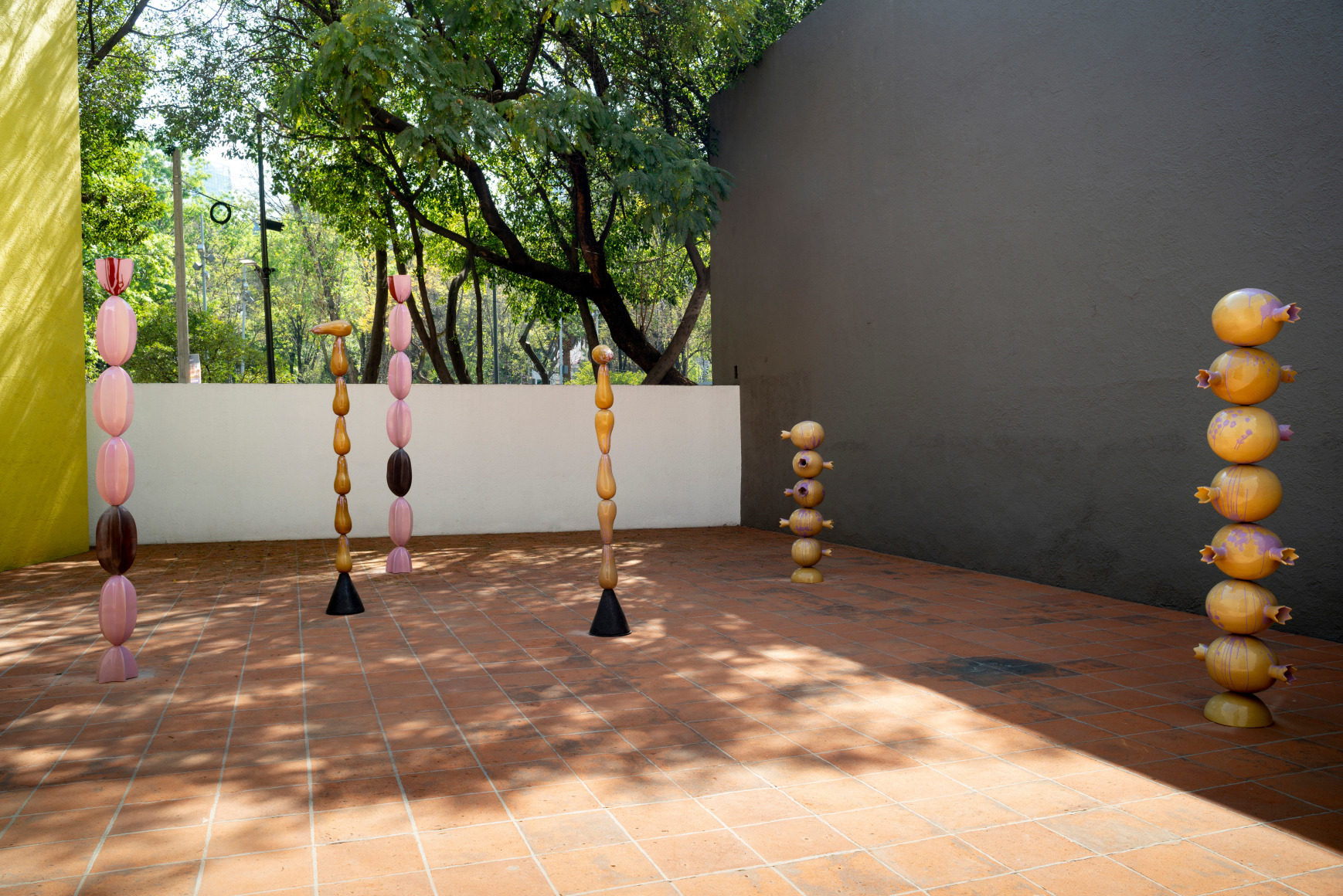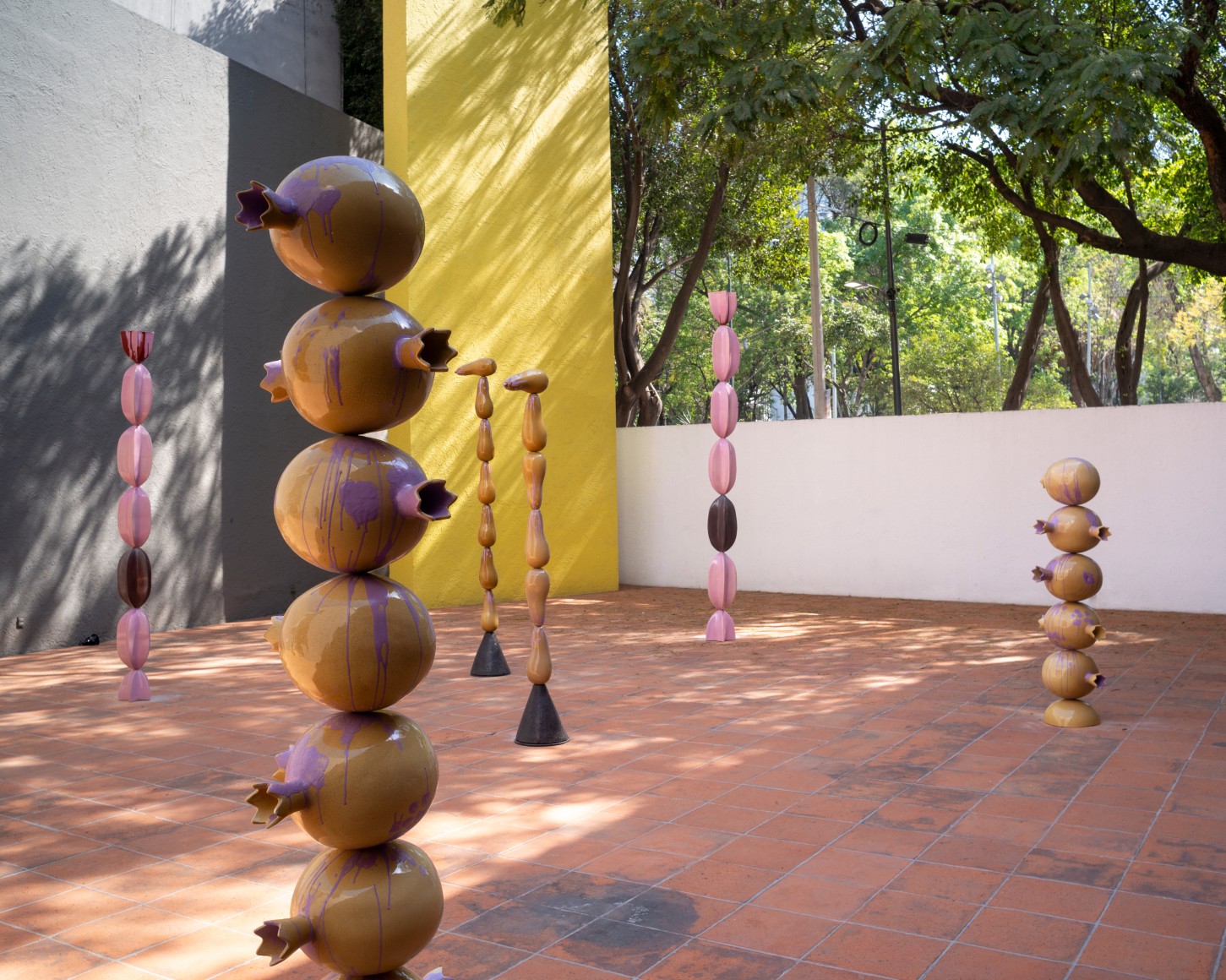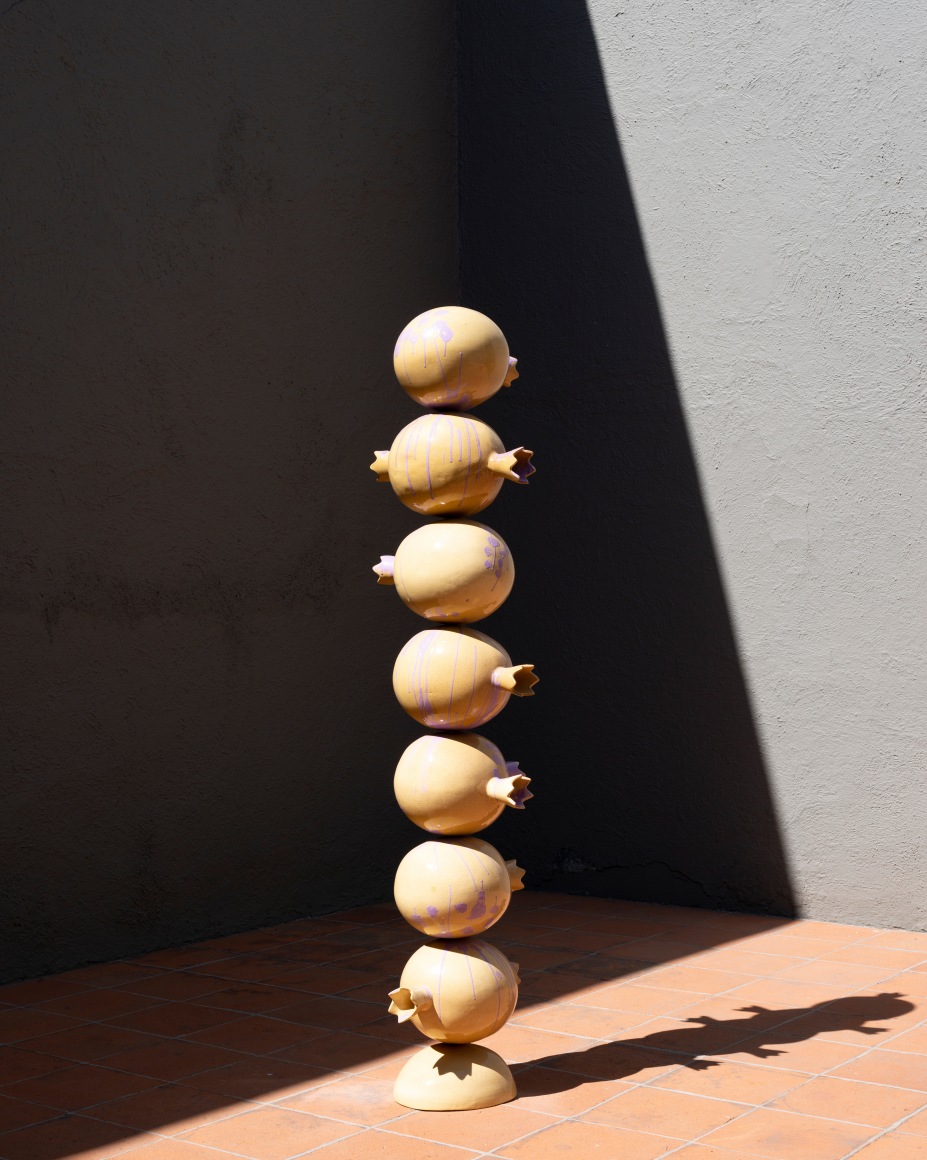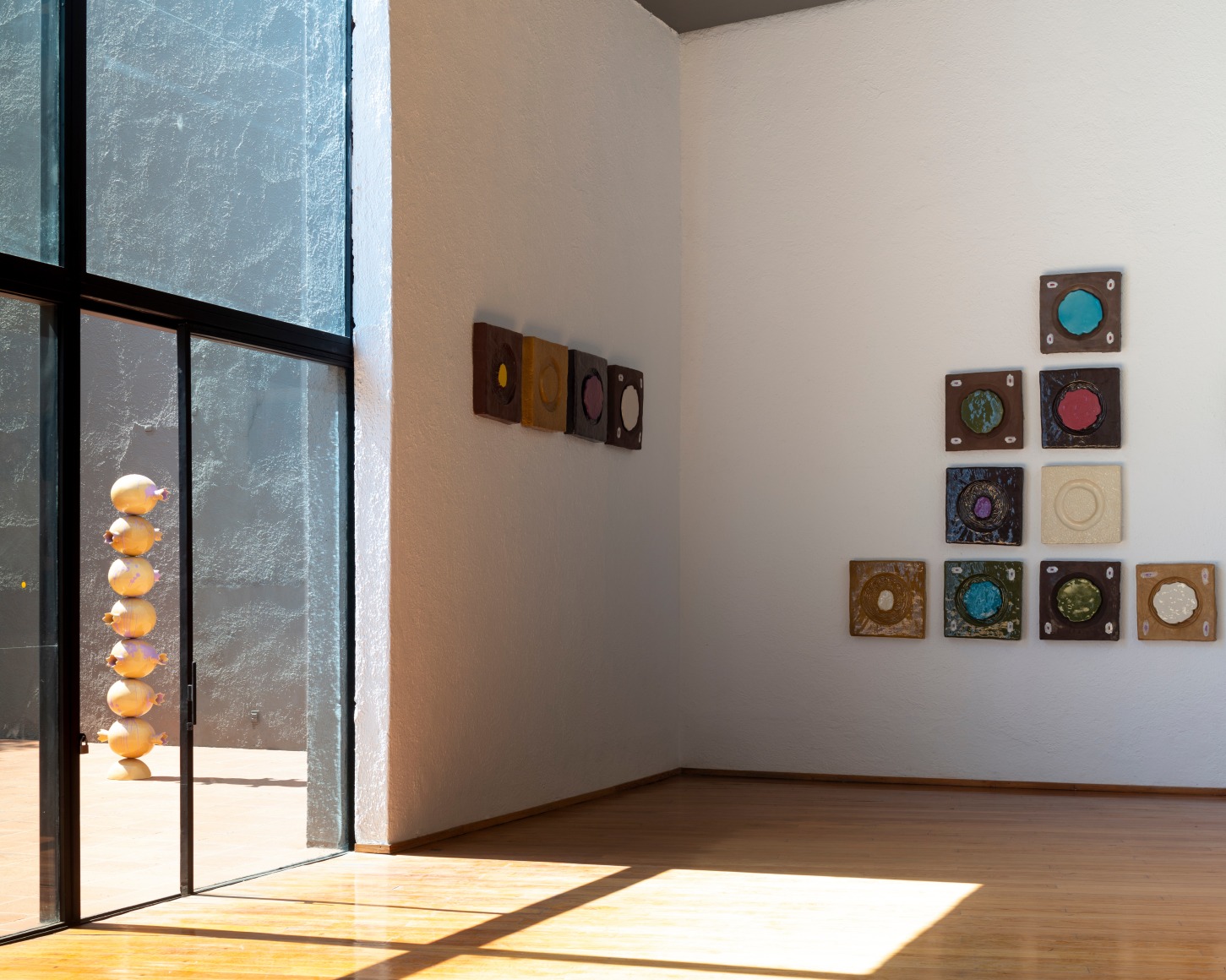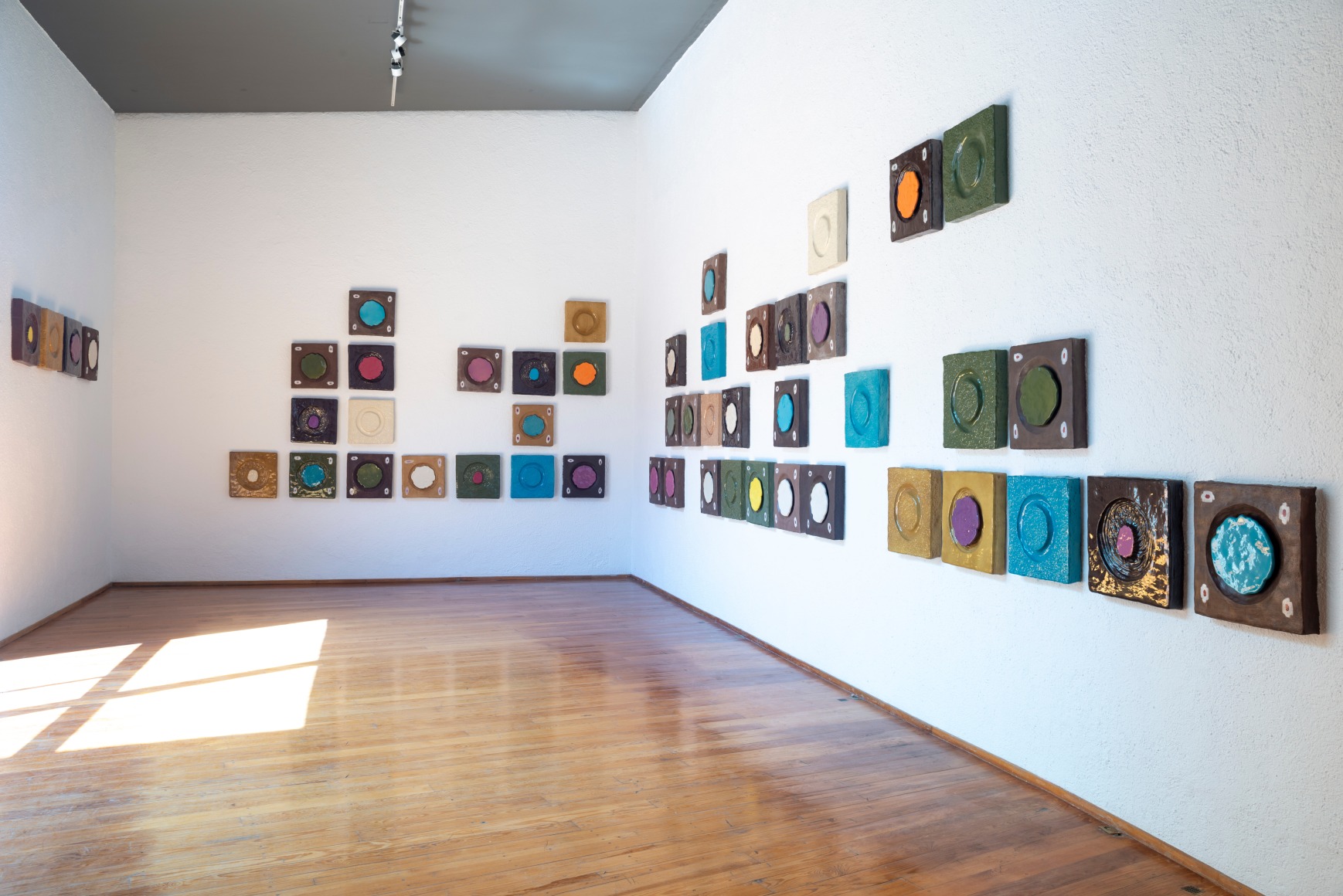The work of Erika Verzutti (Sao Paulo, 1971) unfolds a vocabulary made of witty- lighthearted-rough and sensual shapes. Her practice has travelled a road of associations that explore unexpected affinities between domesticity, organicity, exoticism, spirituality and monstrosity from the perspective of a conspicuous venusian passion. For more than two decades, Verzutti has created families of sculptures–that is how she thinks about them by identifying some pieces as the grandparents of others–that cleverly recover the works of artists such as Tarsila do Amaral, Constantin Brancusi, Piet Mondrian, and Phillip Guston, among others. Her projects are inspired by motifs taken from nature such as plants, fruits, stones, and minerals, highlighting their anthropomorphic possibilities, as well as their ritualistic connotations and their relation to memory.
In 2011, Verzutti incorporated to her practice the production of a long series of hybrid pieces between sculpture and painting. In these pieces she modeled the surface of rectangular clay tablets to then cast them in bronze and intervene them with paint, playing with textures, volumes, and colors. In her project for the Museo Experimental el Eco, Verzutti chose to venture into the use of a new material–for the first time all her pieces for this exhibition are made of ceramics–, as well as a new process–serial production, excepting the final pictorial finish–in collaboration with the Cerámica Suro factory, in Guadalajara. In tune with Mathias Goeritz’s postulates on the use of color, form, and texture to determine the way in which we perceive and relate to the spaces we walk through, Verzutti has generated a prolific sequence of tablets that, by dint of repetition, generate a vibrant stimulus akin to a meditative mantra strongly evocative of the tantric drawings of Rajasthan, north of India. Derived from late sixteenth century Indian illustrated treatises, the lexicon of these images has been used for centuries to reach a superior level of consciousness and to make good vibe charms for people to carry in their pockets.
This rhythmical and sequential repetition of elements is also present in the towers located at the patio, together with Goertiz’s monolith. Erected through the consecutive placement of star fruits, pomegranates, and eggplants, these towers rise as thin characters that inhabit, look at, and protect the space that we walk through. These pieces are part of another long sculpture series by Verzutti that recovers the symbolism of Brancusi’s infinite columns acknowledging them as seminal works of modern art, while also using them as shapes to skewer her fruits. As the curator and art critic Paulo Herkenhoff said, “Verzutti silently superimposes her feminist perspective on the phallic totem”. The different fruit sequences are fused along a clearly erect vertical axis, revealing the sensuality of ambiguous entities that evade the masculine-feminine gender binary. Just as in Venus, a family of sculptures made by Verzutti between 2013 and 2017, where she returned to the ancestral association between the Willendorf Venus and fertility, the entities displayed here appear in the process of revealing themselves not assuming a specific gender.
The combined sensuality of the reliefs hanging from the walls and the columns is woven like a tantra (a Sanscrit word meaning loom, fabric or warp). In the traditions of Hinduism and Buddhism, the term is a metaphor for the way in which writings, theories and teachings shape the threads woven to generate methods, systems, or practices that lead to the spiritual revelation of the connection between the microcosm and the macrocosm, the body and the universe. Mantras (sounds) and yantras (pictures) are central to this tradition. They represent one or more complementary deities that guide meditations. With their strange resemblance to twentieth century abstract art, these drawings evoke serene and sublime, dynamic and terrifying principles.[5] The oval, an allusion to the phallic shape representing Shiva (lingam), interacts with Shakti–the feminine principle, energy, mother of everything. This is the way in which tantric drawings integrate opposing forces: the masculine and feminine principles; day and night; calm and movement. By recovering the ritualistic and sensual connotations of this unifying energy and placing it in the inner and outer spaces of Goeritz’s emotional architecture, Verzutti opens the possibility of revealing other ways to look at a blue sky.
– Tatiana Cuevas


